While a traditional beef tenderloin is rarely seen as a dainty meal for two, a loin can actually be an economical answer to restaurant quality fare – served up right in your own kitchen. Arguably one of the best cuts of meat, a tenderloin – butchered in the right way – can provide several luxury meals at the fraction of the cost of one night out: a steak dinner on Valentine’s Day at a high-end steakhouse can easily run over $110 per person. With this technique, you can get an outrageous dinner for two, but several more steak dinners for about half the cost of that one dinner out!
How to get the most out of beef tenderloin
When hunting for a tenderloin, your best buy is going to be the Peeled, Side Meat On (PSMO). This cut can be found in many discount club stores, and it will almost certainly be available through a good local butcher if you have one in your area. A PSMO beef tenderloin “primal” is usually available vacuum-packed and is much cheaper per pound than the pre-butchered filets in your grocer’s freezer. (In some cases a third of the price.)
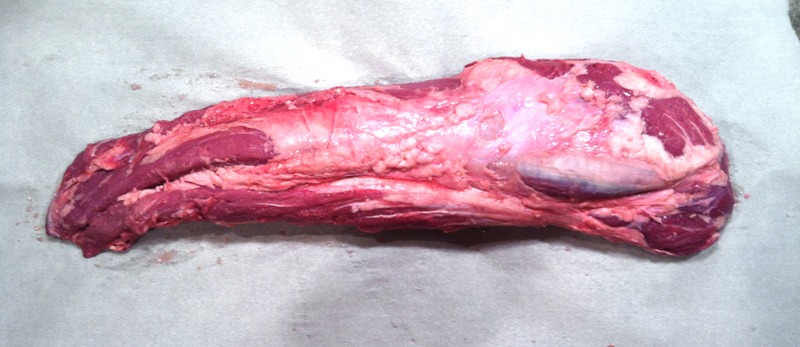
Butchering a whole tenderloin of beef
Once you’ve got your meat home it will take a little bit of time to prep the loin before it’s ready to cut and portion. This is the price you pay for getting the less expensive PSMO tenderloin instead of the pre-trimmed steaks or roasts. However, it’s not hard to trim up! You can follow this instructional video, for guidance:
With the loin trimmed, cleaned and ready to cut you’re left with a plethora of menu options that include Filet Mignon, thin-cut (minute) steaks, traditional roast tenderloin, decadent ChateauBriand and don’t forget the chain meat and the trimmings. (The trimmings can make incredible stroganoffs, elegant tacos, or tasty steak sandwiches. But the chain is…too full of connective tissue to be of much use. Use it in a stick or broth where you need to eat it.) Size-up the tenderloin on your cutting board and (with knife in hand) butcher the large loin into your preferred cuts.
This is actually where the value of buying the whole tenderloin comes into play. While any one of these cuts will suffice for tonight, the rest of the loin can be wrapped refrigerated or frozen until your next stay-at-home date. Just make sure you’re storing the meat you intend to eat soon (within 3-5 days) below 37°F, and other cuts you’d like to save for much later in the freezer at 0°F. It’s always a good idea to label your wrapped meat with a date stamp to help you remember when they were prepped and stored.
A two-person cut for a romantic meal
A medium-sized cut from the center of the loin (no more than 24 ounces) will work perfectly for a Chateaubriand. This is a lover’s meal that can be made in less than an hour, and be remembered much longer. Here’s how we do it:
Cut and trim your mini-roast and stow the remaining steaks and bits safely in the fridge for later. Season your cut with coarse salt and ground pepper. (Putting some dried herbs in with your peppercorns in a coffee grinder is a great way to add extra flavor and interest to the dish. We used some thyme and marjoram and it was delicious!) We’ll be reverse-searing this roast, so it starts with a low-ish temp cook.
Set the mini roast on a rack over a cookie sheet and slow-roast at 275°F in the center of the oven until the internal temperature reaches 115°F (or higher depending on your preferred level of doneness). An oven thermometer, like ChefAlarm is ideal for monitoring the temperature of your roast as it cooks. Insert the probe into the center of the meat and set the alarm to sound a few degrees shy of your desired finish temp. The internal temp will increase as the meat is allowed to rest resulting in achieving the perfect level of doneness. A cut this small should only take about 30 minutes. But don’t go by the timer, use a temperature reading!
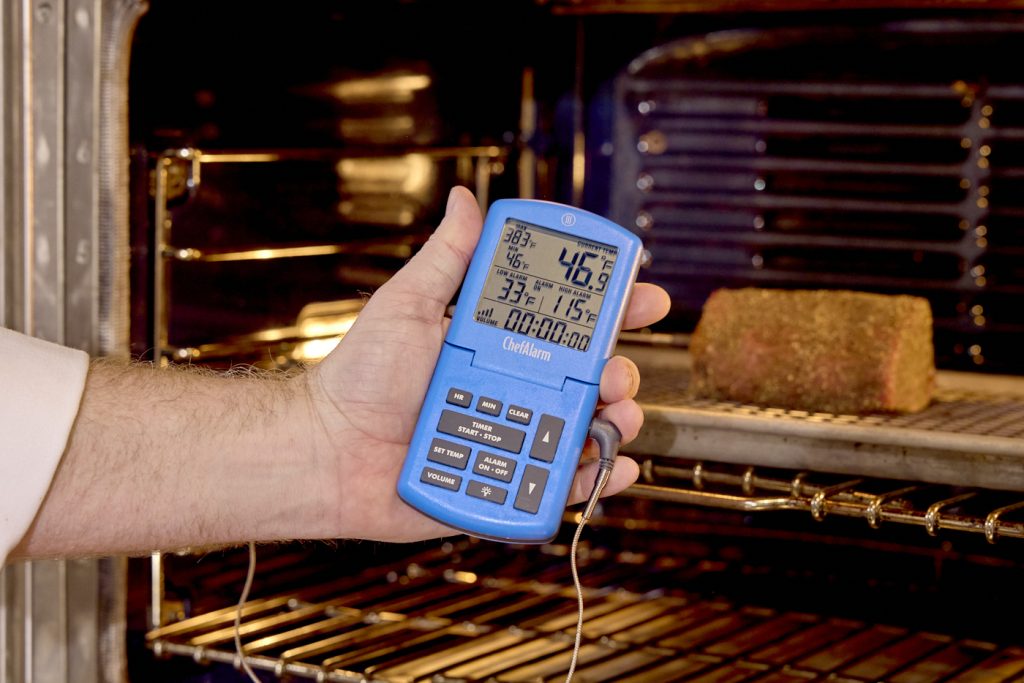
When the ChefAlarm sounds, use your Tehrmapen ONE to verify that you’ve hit your target pull temperature throughout the meat.
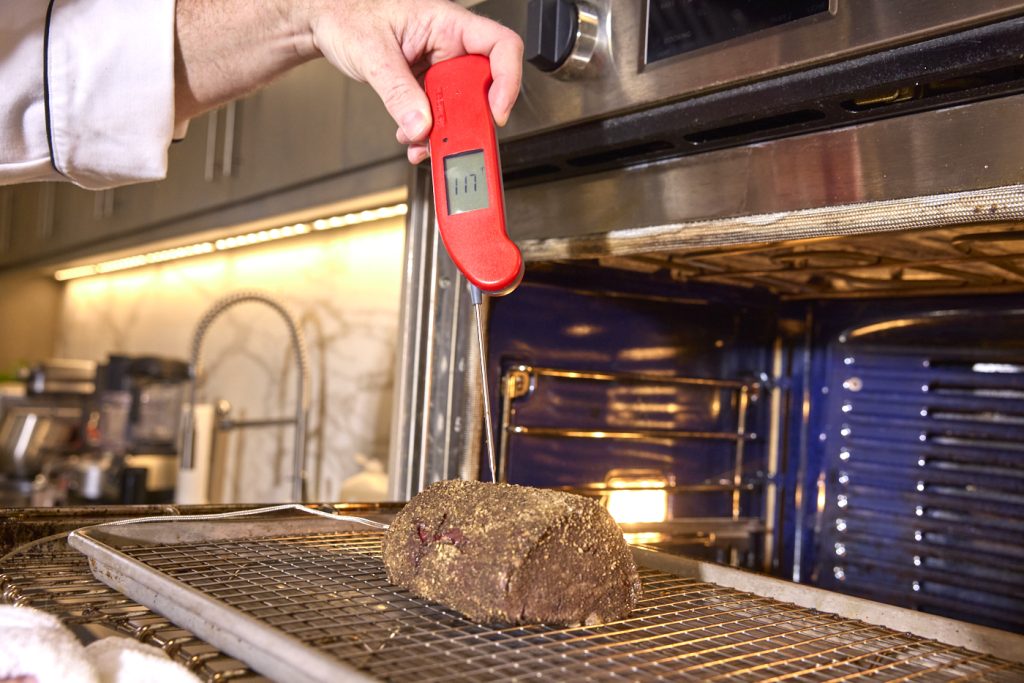
Finishing the sear
Heat a tablespoon of olive oil in a small skillet. Add a small dab of butter. When the oil is just starting to smoke, introduce the meat. Using tongs, turn the meat to evenly brown on all sides and the ends. This should take just a few minutes for the whole process so don’t walk away and leave it in the pan! When browned, remove the meat and cover with foil. Let it rest for 10 to 12 minutes.
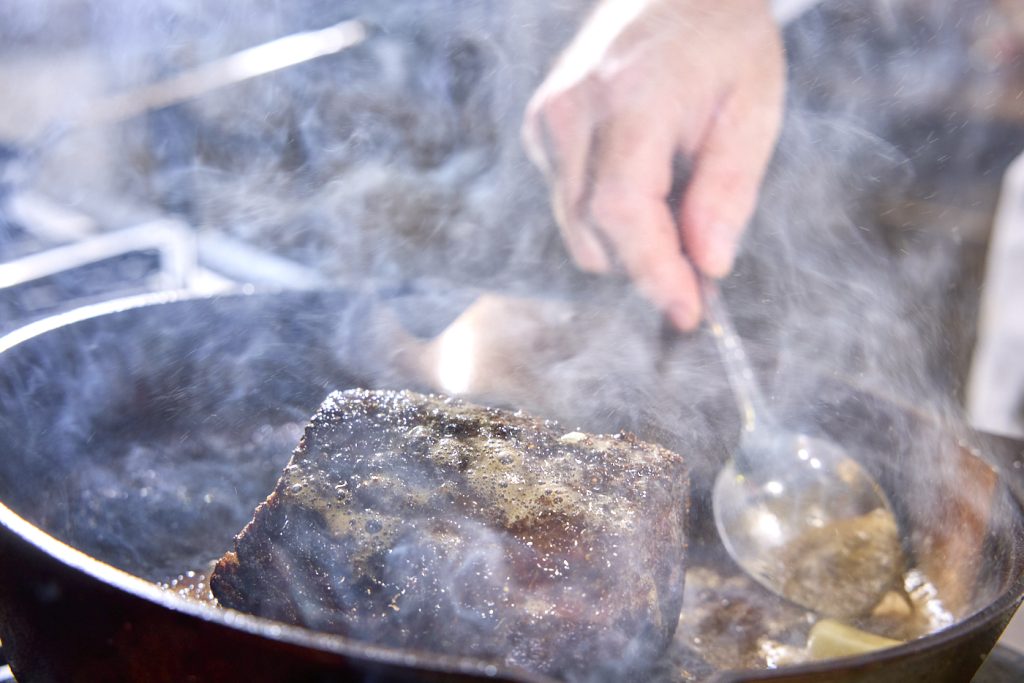
While the meat is resting, deglaze your skillet and make a delectable pan sauce by adding heavy cream. Or, skip the sauce and quickly saute some mushrooms with a bit of onion in the same pan. Mustard sauce, blue cheese sprinkles, béarnaise, or compound butter are all great finish choices.
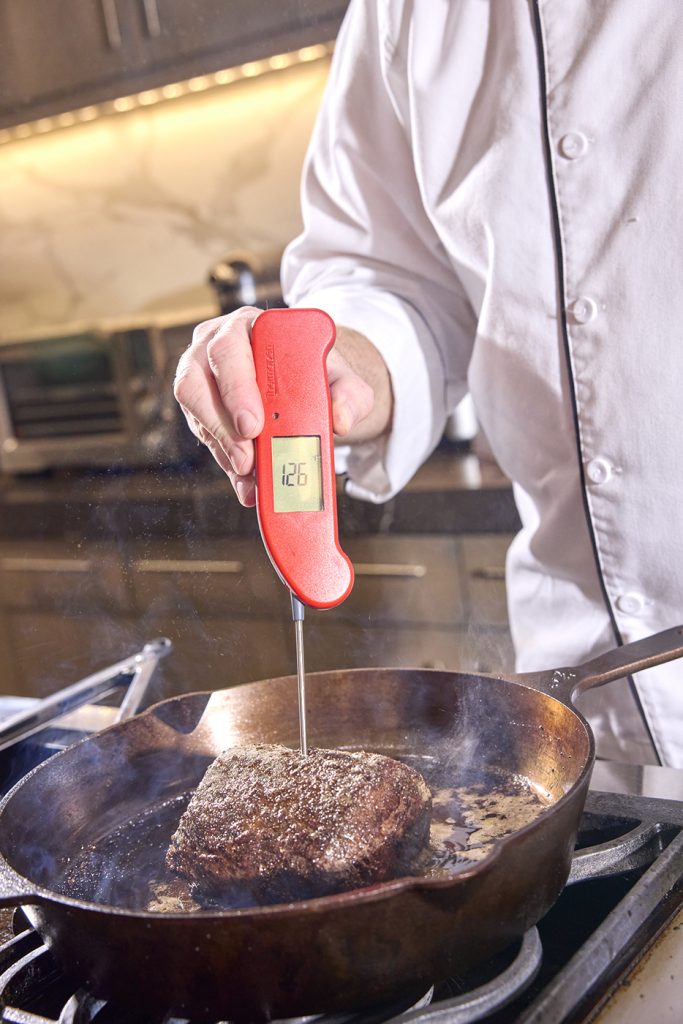
With care, your Tenderloin for Two will be evenly cooked throughout to a romantic shade of pink or red. The tempering before the cook, the low oven temperature, and the quick pan searing; all contribute to the elimination of a wide gray band of overcooked meat. The peak temperature reached during the rest will be your final measure of doneness. We shoot for something between 125°F and 130°F for a flavorful medium rare. Pick your favorite temperature from our Chef Recommended Chart. Here’s the good news, if you really prefer medium well, the tenderloin will still be tender.
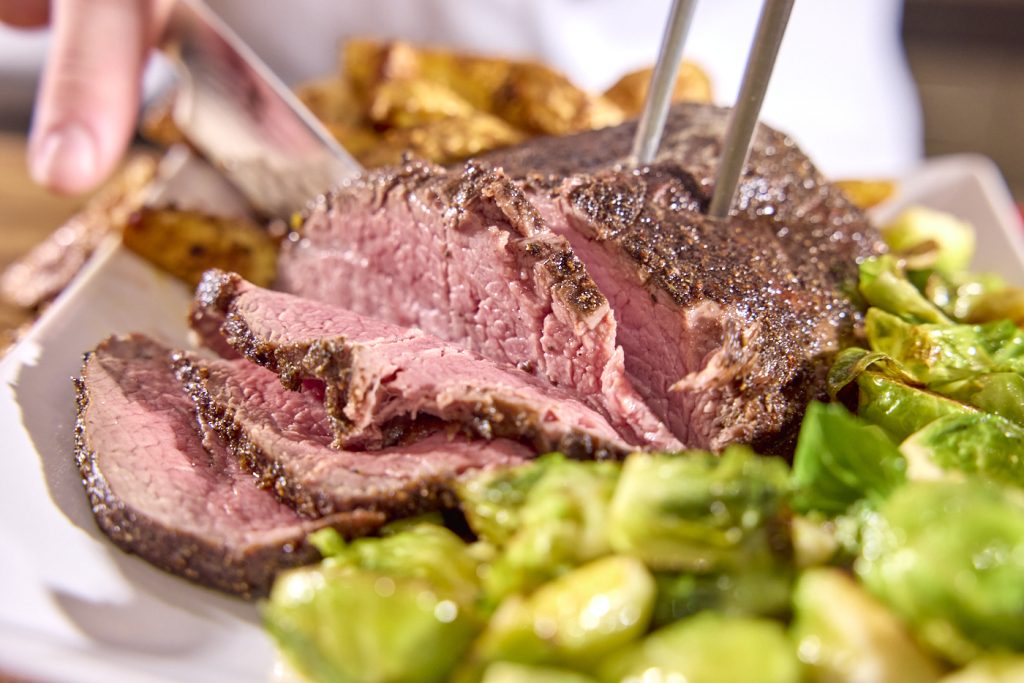
While a discussion of money isn’t romantic, the bottom line is that the piece of meat you cook for this meal may cost also little as $13 to $18. Yes, you’ll pay more than that for the whole PSMO, but you’ll also be getting many more high-quality steak dinners out of it. And this meal of chateaubriand for two would cost well over $100 in a restaurant. But forget the money! Try a Tenderloin for Two—cooked properly with quality temperature instruments—for the luxury experience of a melt-in-your-mouth main course that will be remembered!
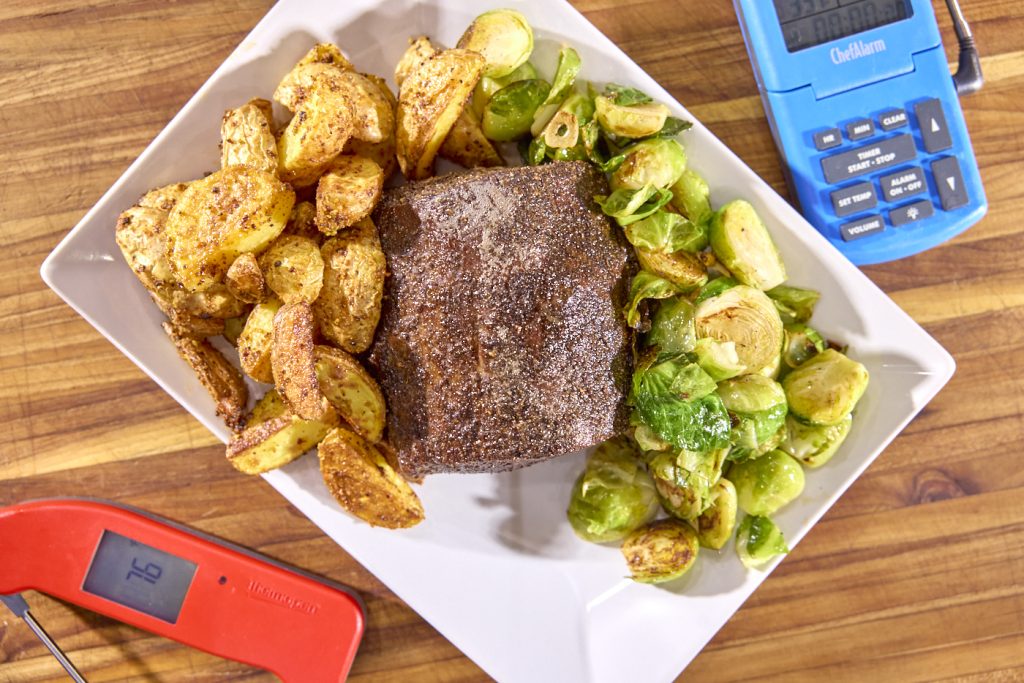
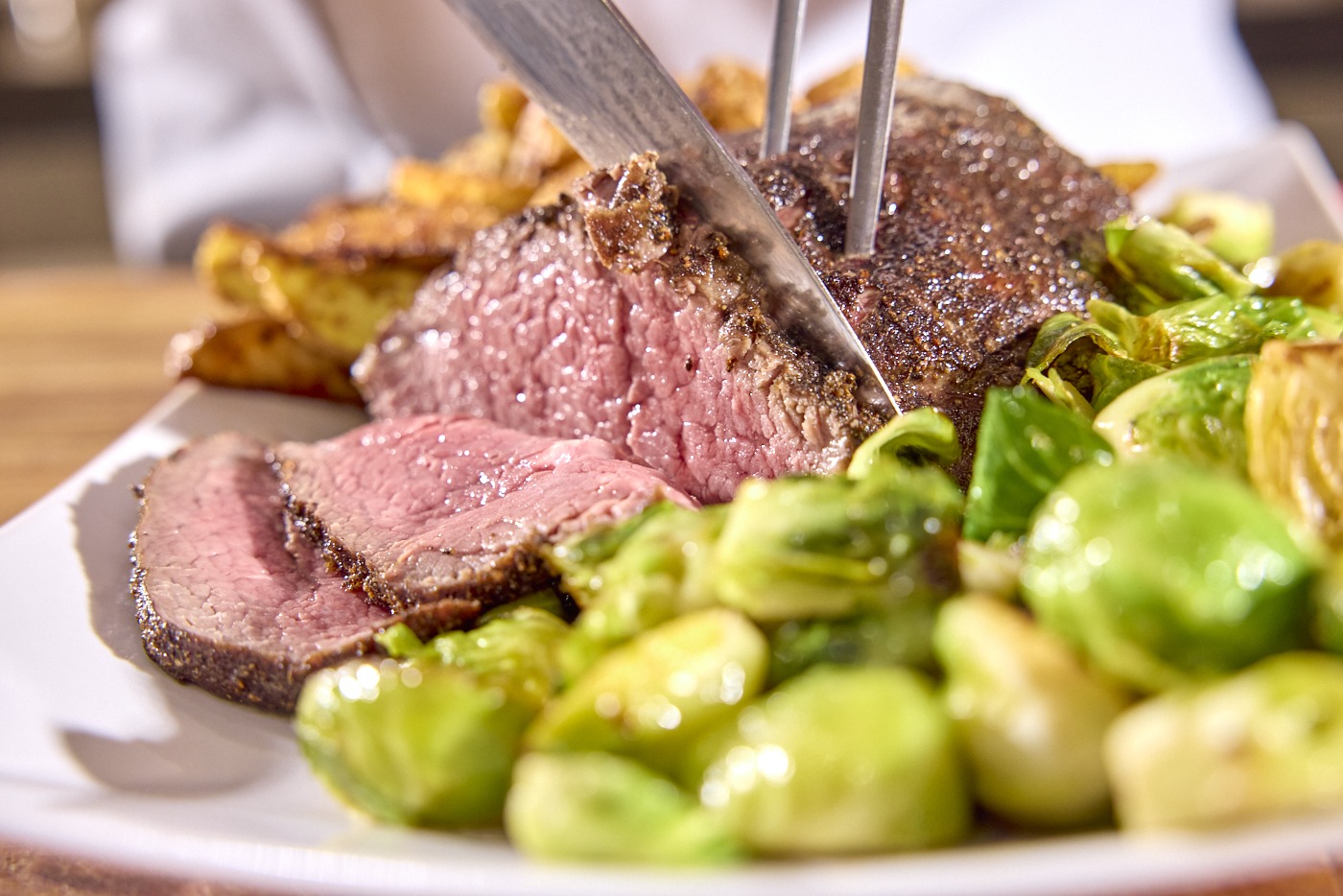
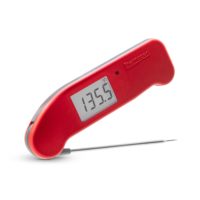
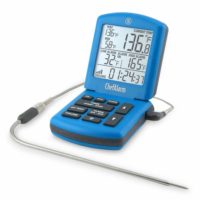
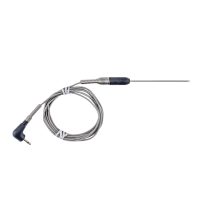

Warren Opal says
Very Welcome Tips
Daniel Lewis says
Darn it Jesse, I didn’t realize how hungry I was until I seen this post! But then again, it was looking to be a fairly uneventful MN winter weekend and now I’ve got some meat shopping plans. Hey, our Thermapen is red too! And just one last thing, don’t ever say that discussing saving money isn’t romantic. if my wife ever raised the subject, I’d ask her to marry me…again!
Lee wos says
Thanks for the tip. Now I’ll know what to look for and what to do with it next time I’m at the meat market. Keep the tips coming.
Adam Poyfair says
Thanks for the advice Jesse. Beautiful meat and article. Looks like I’ll be going to the store now. 🙂
Mark Ates says
Well heck, now I must go to Costco and invest in a PSMO. Great chart on the different cuts. I know what I will be fixing this Valentines Day. Add asparagus and risotto and you are done.
Yelir says
I was always told and always believed the Chateaubriand was the very middle cut of the tenderloin. Not so according to the graphics above. Please clarify.
Thank you
Jesse says
By definition the Chateaubriand is a thick cut of beef tenderloin. It can come from any part of the tenderloin. Some recipes suggest cutting the Chateaubriand from the center of the tenderloin (as you suggest), but it’s not necessary. As long as it’s a cut roughly 4 inches in length and from the tenderloin, it’s fine to use for Chateaubriand. Hope that answers your question.
James jones says
We do this often, I haven’t bought precut steaks in years. I’d cook the steak Sous Vide, at 130 for two hours. I use the “beer cooler” method of sous vide. Then pan sear it.
Chef Bill says
Chain meat is NOT good for stroganoff or much else.
Martin says
Absolutely right, I edited it.